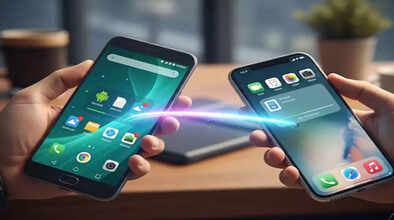Tech Tips: Now files and photos will be transferred easily between Android and iPhone, no tension about size..

Google's Quick Share tool may soon work on iPhone and Mac as well. Till now, it was used only on Android devices, Chromebooks, and Windows PCs, but now it can also come on iOS. This feature works exactly like Apple's AirDrop. Through AirDrop, iPhone and Mac users can instantly share files. Now, if this update comes, it will be easy to transfer files directly between Android and Apple devices.
According to the Android Authority report, a new beta version (25.34.31) of Google Play Services has also mentioned Quick Share for iPhone. That is, Google is now preparing to bring this feature to iOS and macOS. However, to use it on an iPhone, you may have to sign in to a Google Account. It is not required on Android, but in iOS, it can happen due to privacy and permissions.
Quick Share was launched in 2020, previously known as Nearby Share. This feature allows sending and receiving files without internet, with the help of Wi-Fi and Bluetooth. Photos, videos, documents, or large folders can also be easily sent in it.
It is already present in most Android phones and Chromebooks, and its Windows app has also been released in 2023. Now, if it comes on iPhone and Mac as well, then it will really be a big change.
Can become a universal service
However, this can be a bit of a challenge for iPhone users, as they already have AirDrop, which is built in the system. But many users have trouble with cross-platform sharing. Often, people resort to email, WhatsApp, or a cloud service for file transfer. In such a situation, Quick Share can prove to be a useful option for iOS and macOS. If Quick Share comes on iOS, it will become a universal file sharing service for all Android, iPhone, Chromebook, and Windows users.
Disclaimer: This content has been sourced and edited from News 18 hindi. While we have made modifications for clarity and presentation, the original content belongs to its respective authors and website. We do not claim ownership of the content.

